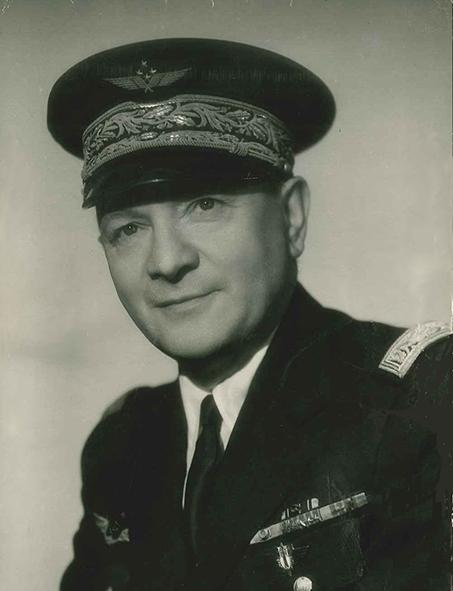Fernand Hederer

The 2008 graduating class at the Naval Officers’ College took the name "promotion Hederer" in memory of Fernand Hederer, a Navy Commissioner, veteran of the Great War and resistant against the Nazi occupant.
Born in 1889, Fernand Hederer was part of the 1913 graduating class of the French Naval Officers’ College. In 1914, he was assigned to the 1st Regiment of Naval Gunners, and then to the 1st Heavy Railway Artillery group, where he served as second officer and then as battery commander. On 6 April, 1916, Hederer became an air observer and then fighter pilot in September 1917. In February 1918 he took over commandment of the SPAD 285 fighter squadron, an exceptional honour for a young 3rd-class commissioner.
The war was an opportunity for him to get to know “Flying Aces”, notably Coli, Guynemer, Fonck and Navarre. Hederer received several commendations (army, division and regiment) and was decorated with the War Cross with three palms and three stars, as well as the Legion of Honour in 1917. All the commendations he received pointed out the man’s qualities, his courage, his energy, his disdain for danger and his leadership qualities. Hederer also brought home from the war a piece of shrapnel in his right forearm and a half-frozen foot from a flight during which the only way he got away from the enemy was by flying as high as he could. But there was one wound that would never heal – the twenty pilots in his squadron who were killed in action in less than one year.
When peace returned, 1st class commissioner Hederer served on board the armoured cruiser Marseillaise, then as the commissioner of the naval base in Constantinople. He then joined the maritime stewardship services at various ports. In 1925, he started a new career in the naval inspection corps. In 1929, at his own request, he was assigned to the Ministry of Aviation. He carried out sometimes sensitive inspection missions, such as that of the Compagnie Générale Aéropostale in South America, which led to his integration, in 1933, into the French aeronautics administration’s inspection corps. Appointed inspector general in March 1936, he worked with Pierre Cot, then Minister of Aviation, in directing the nationalisation of the aeronautics industry.
Still on Cot’s staff during the "phoney war", Hederer was seriously wounded in an automobile accident during the rout of June 1940. At the start of the Occupation, he took part in distributing anti-German propaganda. Under the war name "Pommery", he took part in many resistance actions and joined the Marco Polo resistance network on 1 January 1943. He had contacts with emissaries from London and supplied information to the SRA in Lyon, notably concerning the Luftwaffe’s activities between Salon-de-Provence and Marignane: warehousing "of bombs and munitions, control points, radars, location of anti-aircraft defences, etc.” As the organiser of this aviation intelligence service, his activities led him to be on the Gestapo’s wanted list for Marseille and Aix at the beginning of 1944.
During the liberation of Paris, he ensured and reorganised the administrative organs of the Ministry of Aviation under his own authority. His conduct was rewarded with the Grand Officer of the Legion of Honour plaque, the 1939-1945 War Cross with palms and the Resistance Medal with rosette.
After the war, he was named director of inspections for aeronautics and then for armaments, finishing his career in government service as Secretary General for Civil Aviation. Having reached the age limit for his rank in 1951, he began a new career in industry. He held the position of CEO of the Société Française d'équipements pour la Navigation Aérienne until 1965.
At the age of 93, he was elevated to the dignity of the Grand Cross of the Legion of Honour. This decoration was presented to him by Marcel Dassault, who was happy to pay homage to the man who had defended him when, in 1941, he was arrested on order from Laval, to the man who had helped his wife during the two years that the aircraft manufacturer spent in deportation at the Buchenwald concentration camp and who had helped several Jewish families seeking refuge in the South of France.

